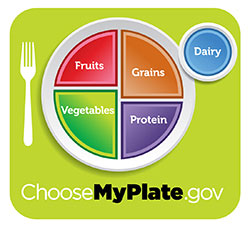Glycemic Index | Glycemic Load | Factors that Alter Glycemic Value
| In 1981 researchers David Jenkins and Thomas Wolever of the University of Toronto published a study suggesting that the "glycemic index" of foods be used to classify carbohydrates rather than the traditional "simple" and "complex" system. Contrary to traditional belief, the study found that complex carbohydrates were actually digested faster than simple carbohydrates; therefore, complex carbohydrates increased blood sugar much faster than simple carbohydrates. |
Glycemic Index
|
Glycemic index (or GI) is a ranking of how fast a given food triggers a rise in blood sugar level. The developers of the glycemic index used pure glucose as the standard, giving it a rating of 100; therefore, the closer a particular food is to 100, the higher its glycemic index. All foods that are ranked by GI are based on 50 grams of carbohydrates, regardless of how much of that food it takes to reach 50 grams.
When high GI foods are consumed, the pancreas detects that rapid rise and quickly pumps out a high level of insulin to balance the blood sugar levels. The result is a sudden "crash" in blood sugar. This sudden "crash" of blood sugar level is thought to create cravings for more carbohydrates, resulting in a vicious cycle of abrupt ups and downs and overeating. Low GI foods are digested slower; therefore, there is a gradual rise and descent of blood sugar when insulin is released from the pancreas lessening carbohydrate cravings. |
Glycemic Load
|
Although the glycemic index ranks how rapidly a particular food turns into sugar, the serving amount is not clear. The glycemic load is a ranking of how much a standard serving of food raises your blood sugar. The lower the glycemic load is of a food, the larger the serving of that food it will take to cause a spike in blood sugar.
The glycemic load of a particular food is calculated by multiplying the amount (in grams) of carbohydrate in a serving by the glycemic index and dividing that number by 100. Consider the following examples: |
|
If one serving of a food item contains: 12 grams of carbohydrate (carbohydrates less fiber) and has a GI of 40 12 x 40÷100 = 4.8
This food has both a low Glycemic Index (GI) and a low Glycemic Load (GL) |
|
If one serving of a food item contains: 56 grams of carbohydrate (carbohydrates less fiber) and has a GI of 45 56 X 45 ÷ 100 = 25.2
Although this food item has a low Glycemic Index (GI) of 45, the |
| The preceding examples help to explain why the glycemic load (GL) value of a food may be a better tool than the glycemic index (GI) value of a food when evaluating the foods you eat. |
Factors that Alter Glycemic Value
|
The following factors can alter the glycemic effects of food:
|
| Note: When eating high GI or high GL foods, adding fat to the food will slow down the rise in blood sugar levels. (Example: spreading peanut butter on a slice of white bread will slow the rise in blood sugar levels caused by the white bread.) |
| Note: High insulin levels are also believed to play a part in diseases, such as diabetes, high cholesterol, blocked coronary arteries, high blood pressure, strokes, and obesity. Controlling spikes in insulin may help to alleviate some of these health risks. |












